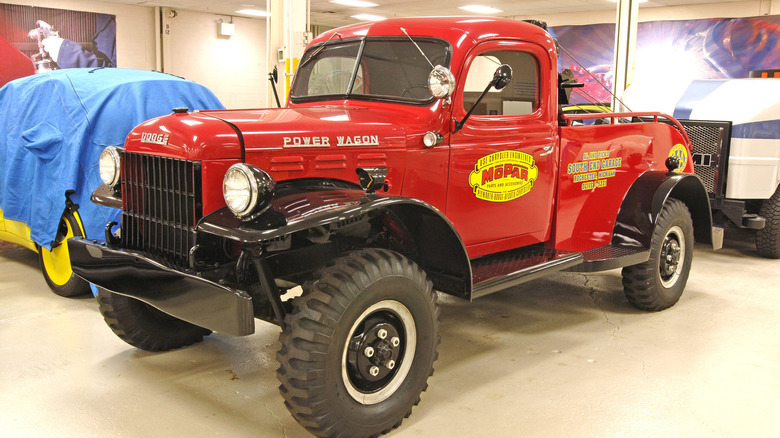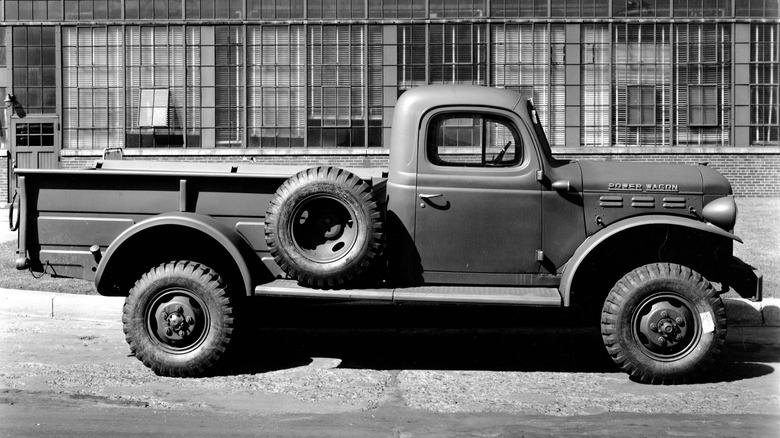This Classic Dodge Pickup Was America's First 4WD Truck
At the end of World War 2, Willys–Overland Motors trademarked the name "Jeep" for its general purpose off-road vehicle that was developed for allied military forces. Willys-Overland Motors seemingly understood that the Jeep's versatility would be equally appreciated by civilians, such as farmers and construction workers. The backstory of the Jeep is pretty well ingrained in American lore, but another staple of today's automotive industry also had origins in World War 2.
It's the four-wheel drive pickup truck, pioneered by Dodge's "Power Wagon." Like the civilian Jeep, the Power Wagon was heavily based on its military counterpart, the three-quarter ton WC-series. When the Power Wagon was introduced in 1946, Dodge cleverly advertised the four-wheel drive machine as "the truck that needs no roads."
It's unclear where exactly the name "Power Wagon" originated — some speculate that it was lifted from a truck enthusiast magazine with the same title — but suffice to say, it wasn't because of a powerful engine. The Power Wagon's 230 cubic inch six-cylinder produced less than 100 horsepower in an (up to) 8,000 pound, fully-loaded truck. Torque output wasn't much better at a measly 185 pound-feet.
Fortunately, the rest of the truck's drivetrain was designed to take advantage of the limited engine output via torque multiplication from its ultra-low transmission and axle gearing. The Power Wagon's cargo bed was a generous eight feet, and could carry an impressive payload of up to 3,000 pounds. Meanwhile, its 34-inch tall knobby tires afforded over 10-inches of ground clearance.
Versatile as a tractor, off-roader, and more
Unlike the four-wheel drive pickups of today, which are primarily used for snowy weather or running off-road trails, the Power Wagon was frequently found pulling double duty as a tractor. To that end, numerous accessories like hydraulic pumps and power take-offs were marketed to aid in plowing, cultivating, sawing, and countless other tasks. In fact, Dodge had its own in-house magazine called "Job-Rater" that was distributed to truck owners quarterly with ideas and suggestions to improve work productivity — using a Dodge truck, of course.
Another marketing scheme was more prescient of four-wheel drive's upcoming role in recreational use. It was a film titled "Wheels Across the Andes," which followed explorer Armand Denis on a trek through the untamed jungles and treacherous mountains of South America in the relative comfort of a Power Wagon.
The Power Wagon remain mostly unchanged for its entire production run, with the exception of slightly more powerful engines and incorporating developing technology; like a 12-volt electrical system, and synchronized transmission. The original Power Wagon was finally discontinued in 1968, after a total production run of 95,145 units.
Nowadays, Dodge uses the iconic Power Wagon name for an off-road package on its 2500-series of Ram pickup trucks. However, with a base price of $70,320 including delivery, it'll be hard to be tempted to plow the back 40 acres with it.

